| Home page | Teaching | Group seminars | Miscelaneous |
List of publications: Google Scholar, arXiv
Research highlights
Transport properties of Iron under Earth-core conditions
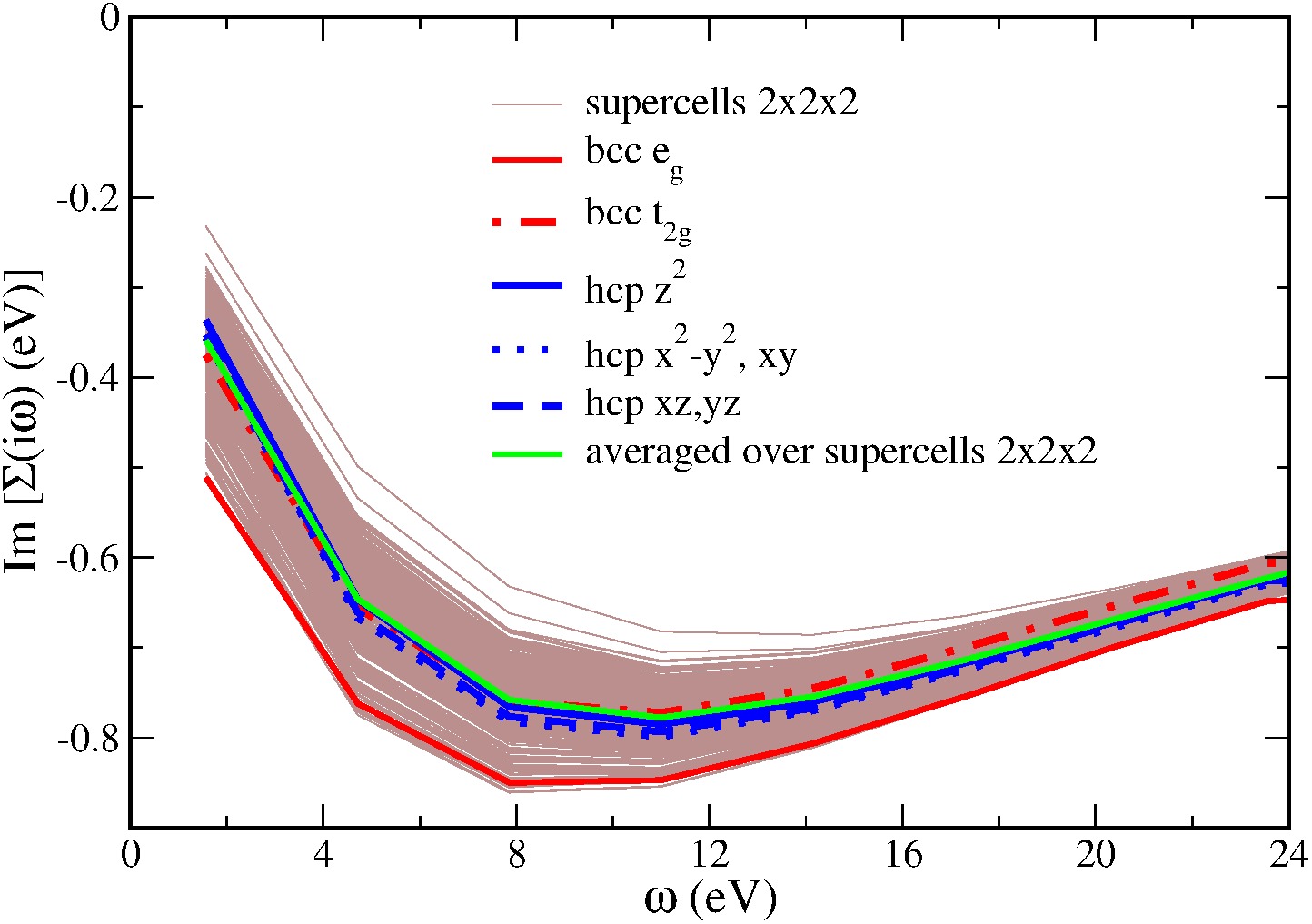 Electronic self-energy in Iron with thermal disorder |
The magnetic-field of Earth that protects us from the solar wind is sustained by a geodynamo mechanism that operates in liquid iron at extreme conditions at about 5000K and at 200GPa. Electronic properties of both liquid and solid iron phases under such extreme conditions are contraversial and cannot be reliably measured in laboratory. In this paper we investigate the mutual effect of the thermal vibrations and electronic scattering in a highly non-crystaline environment that affects the electrons close to the melting temperature. |
Bad-metallic transport
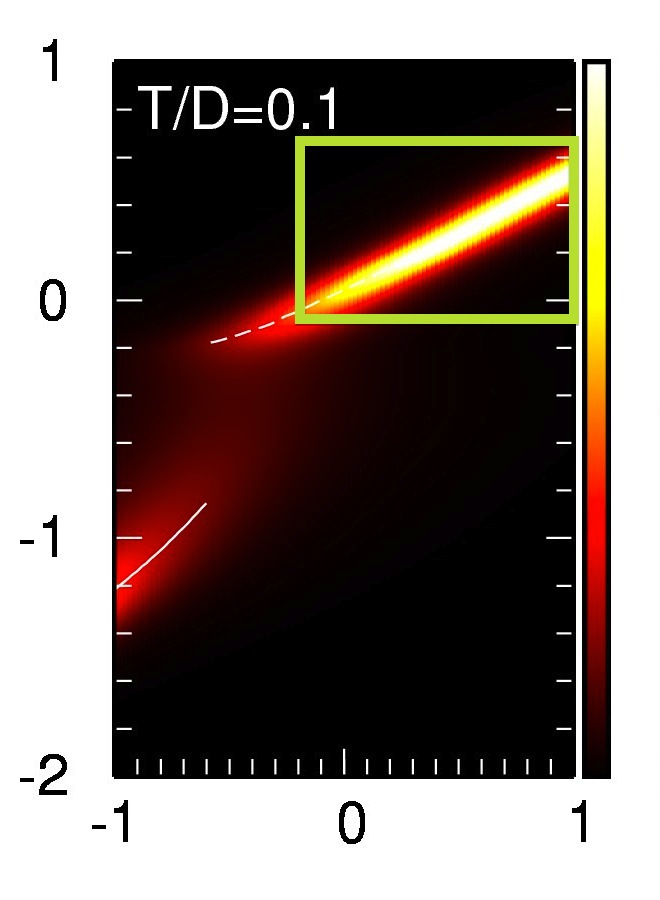 Resillient quasiparticles in a warm bad metal. |
Many metals in which electronic correlations are important are |
Electronic correlations in multi-orbital materials
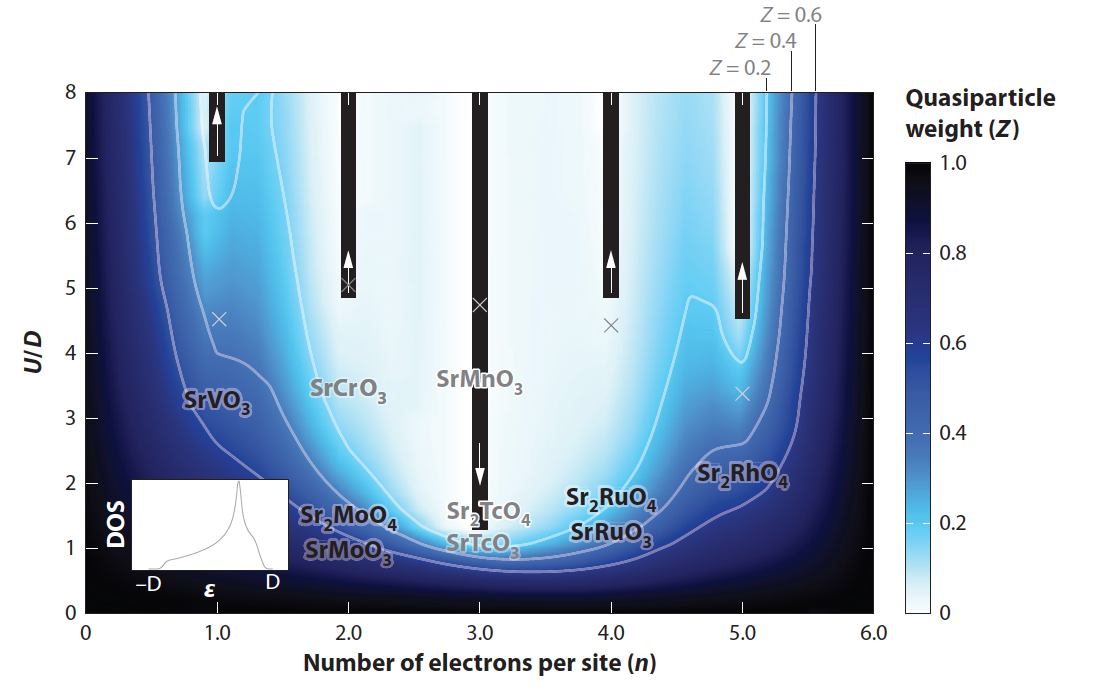 Strong correlations from Hund's coupling. Published in Annual Review of Condensed Matter Physics |
Many materials are multi-orbital, that is, more than one active orbital is important. The Hund's rule coupling that splits atomic multiplet splittings has been found to importantly affect the strength of electronic correlations in a way that depends on the filling of the orbitals. Hund's rule coupling can cause strong correlations far from a Mott insulating state. Materials in which Hund's rule coupling is playing the key role are known as Hund's metals. Ruthenates and iron pnictides are important members of that family of compounds. |
Spin-thermoelectric effect in quantum dots
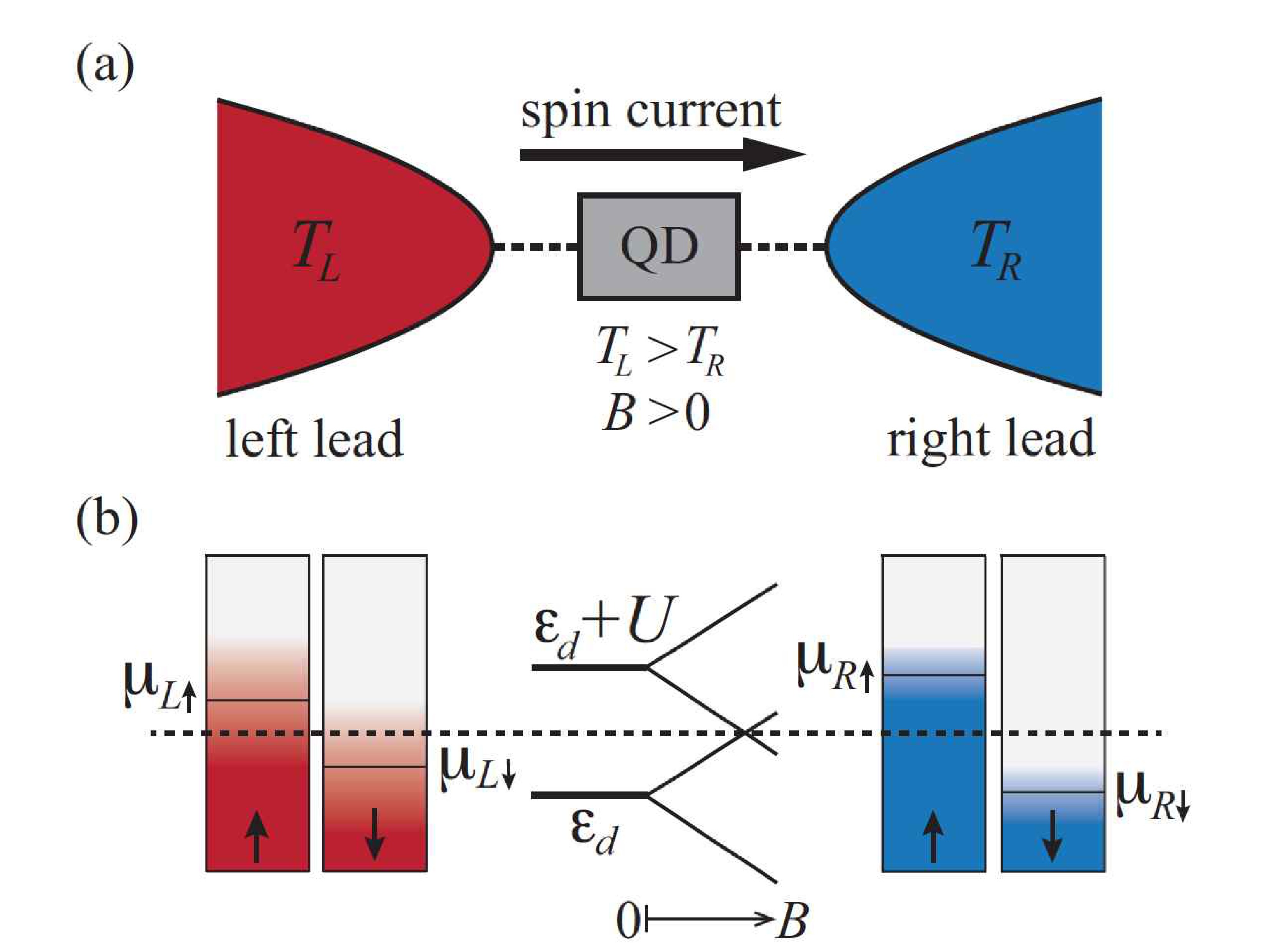 Spin Seebeck in a quantum dot. |
When time-reversal symmetry is broken the thermal gradient leads to spin-current. In this work we investigated this spin-thermoelectric effect in a quantum dot described by exactly screened Anderson model. Interesting non-Fermi liquid effects are discussed here . |
Low energy optical conductivity
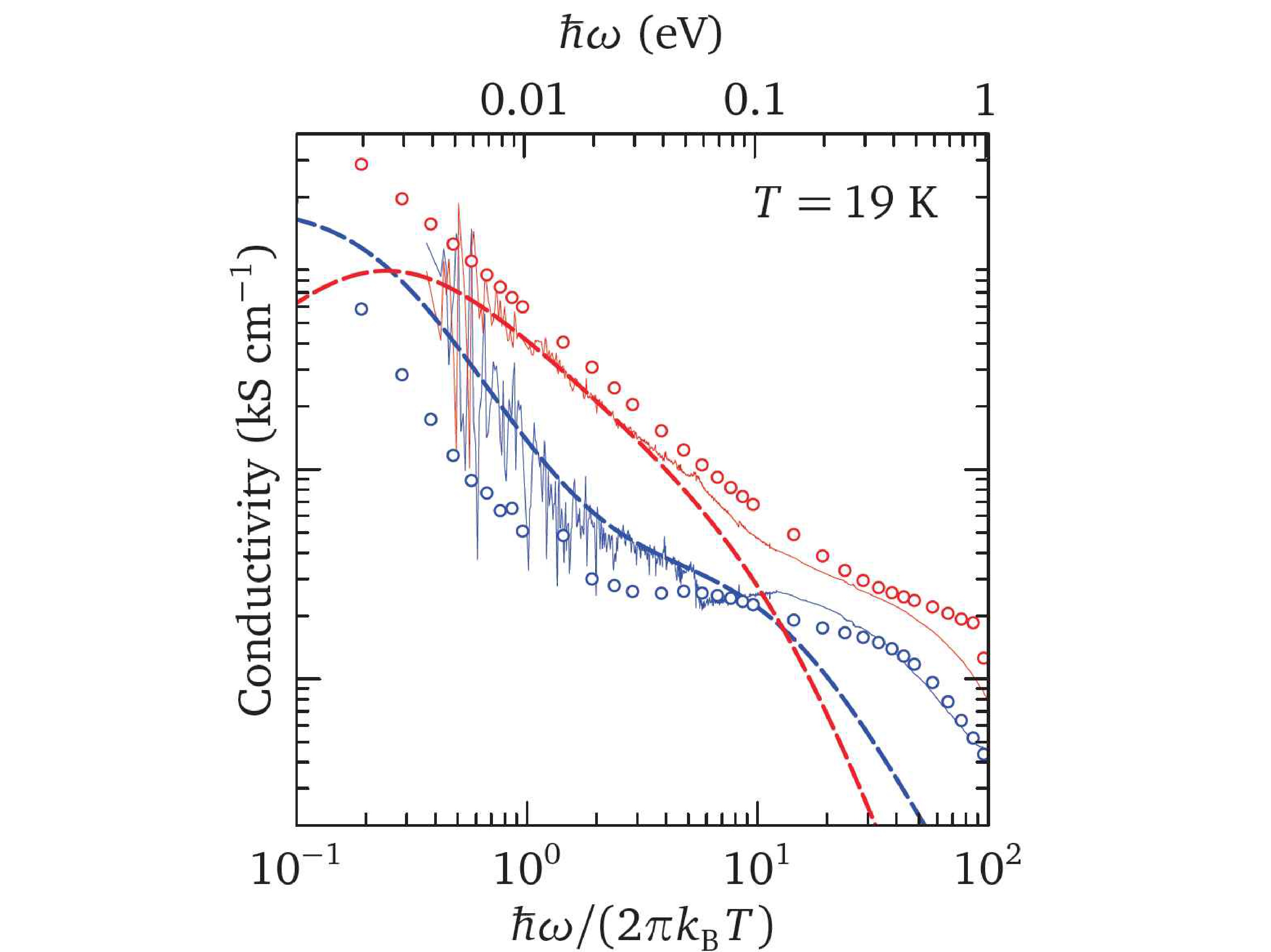 Optical conductivity of strontium ruthenate. |
The low frequency optical response in layered strontium ruthenate behaves in accordance with Fermi liquid predictions. On the other hand, the optical response of CaRuO3 decays as an anomalous power-law. In a work we have shown that it is the low-energy interband transitions that are causing the anomalous optical response. |
Equation of state and transport in hcp-Fe under pressure
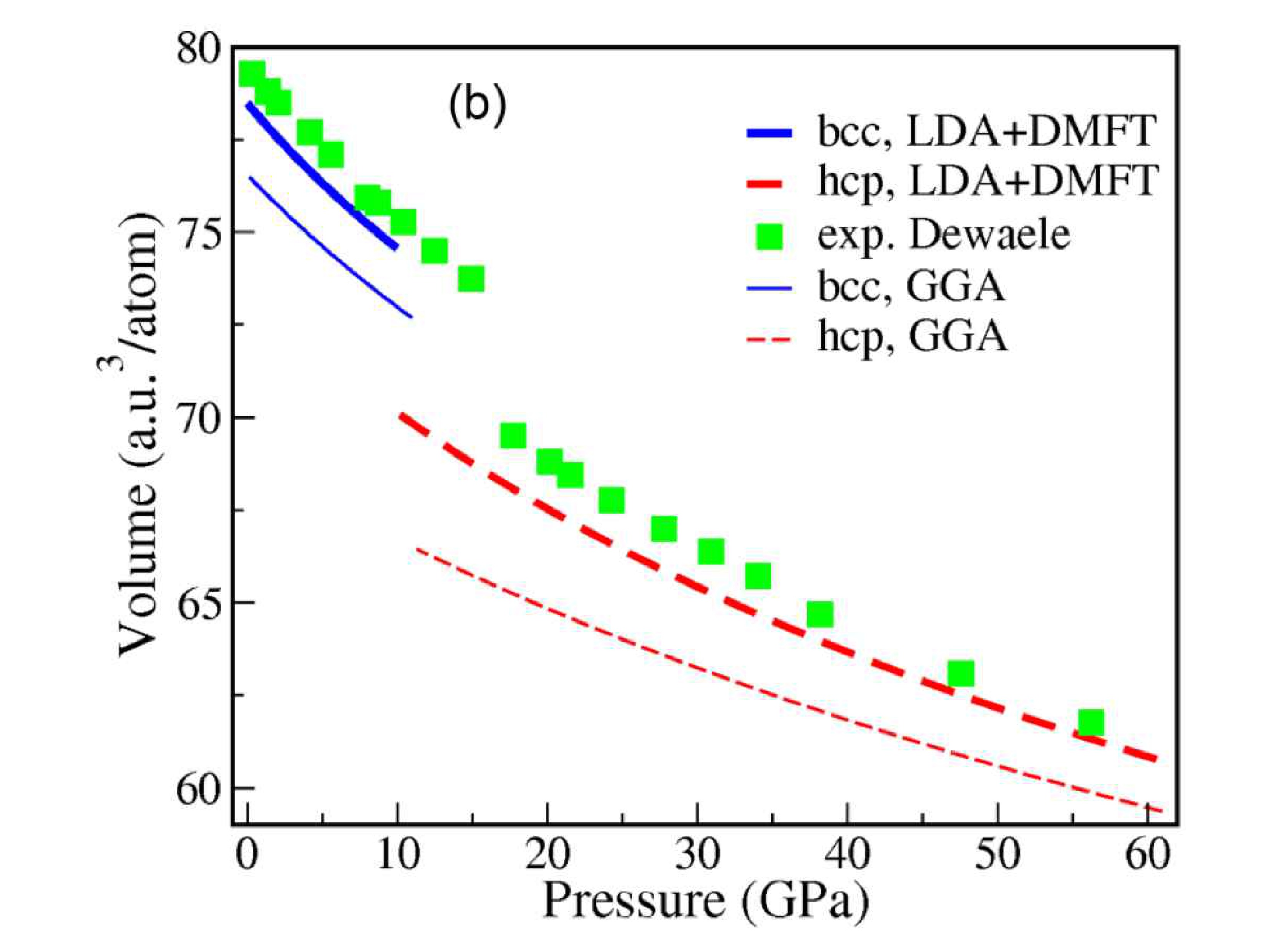 Equation of state in hcp-Fe |
hcp-Fe is a phase of iron that is stable if a pressure around 7GPa is applied. At low temperatures it becomes superconducting. It is believed also to be the main consitutent of the Earth-Core (where the pressure is much larger, however, around 300GPa). hcp-Fe is not described well by density-functional theory. In this work we have shown that good description of hcp-Fe is obtained if correlations described by the DMFT are included. The resistivity was, however, found to be severely underestimated. Developing techniques that would correctly describe the missing scattering is one of the future directions of my research. |
Magnetic properties of technetium perovskites
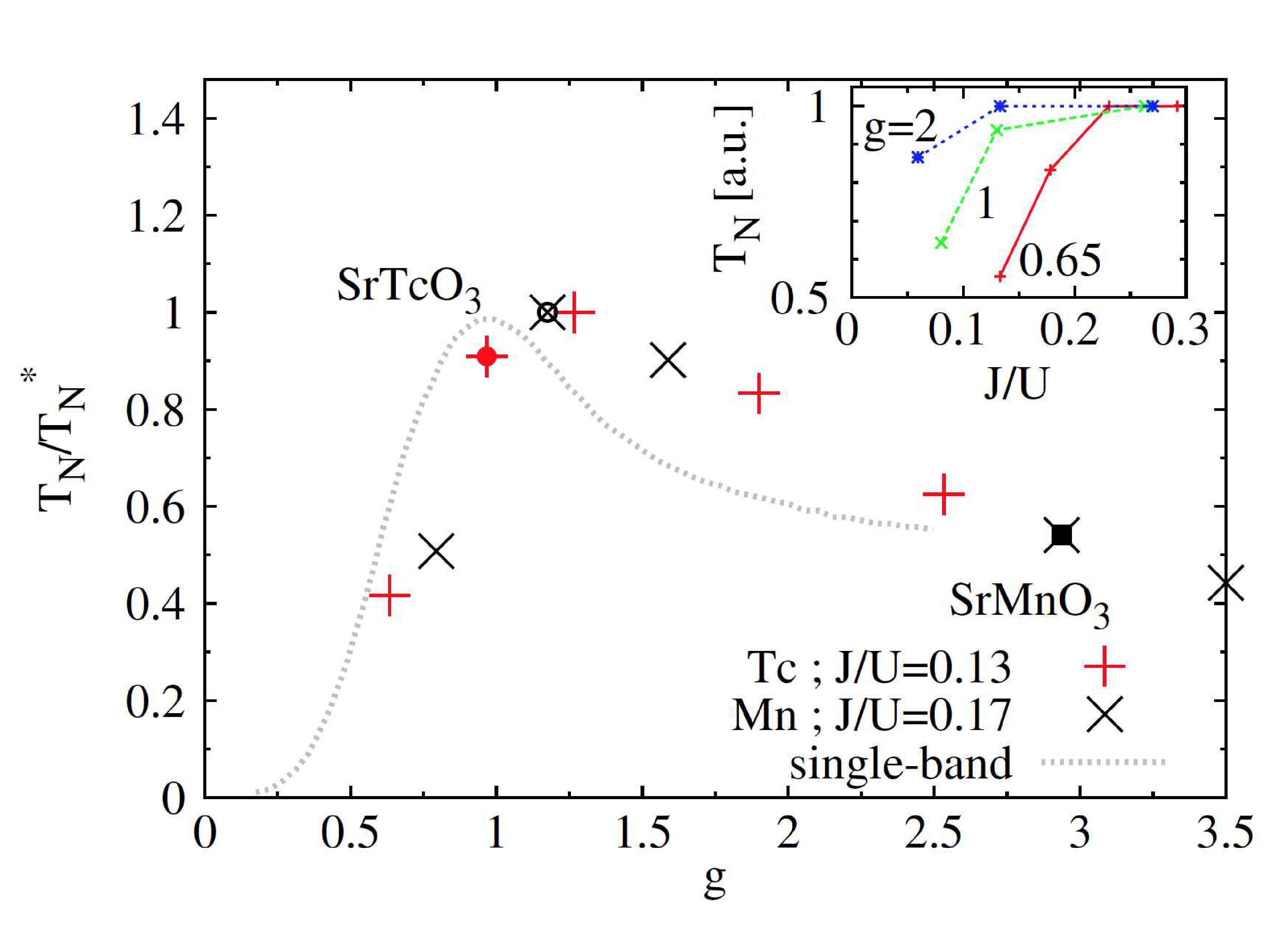 Evolution of Neel temperature as a function of interaction strength. |
Techneatates are perovksite compounds with a half-filled 4d t2g electron shell. Recently record Neel temperature was reported in SrTcO3. Within the LDA+DMFT approach we investigated why this is so. |
Updated: